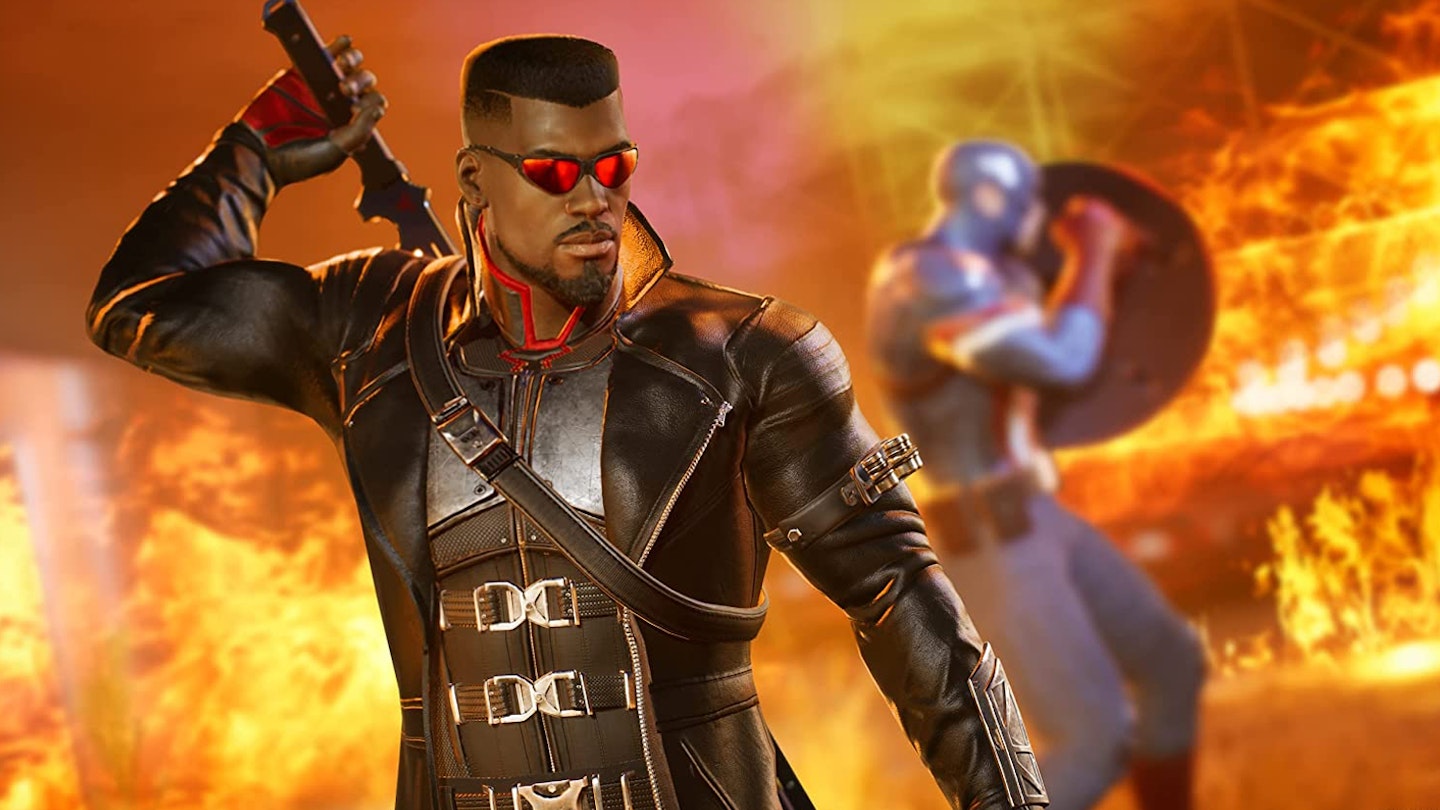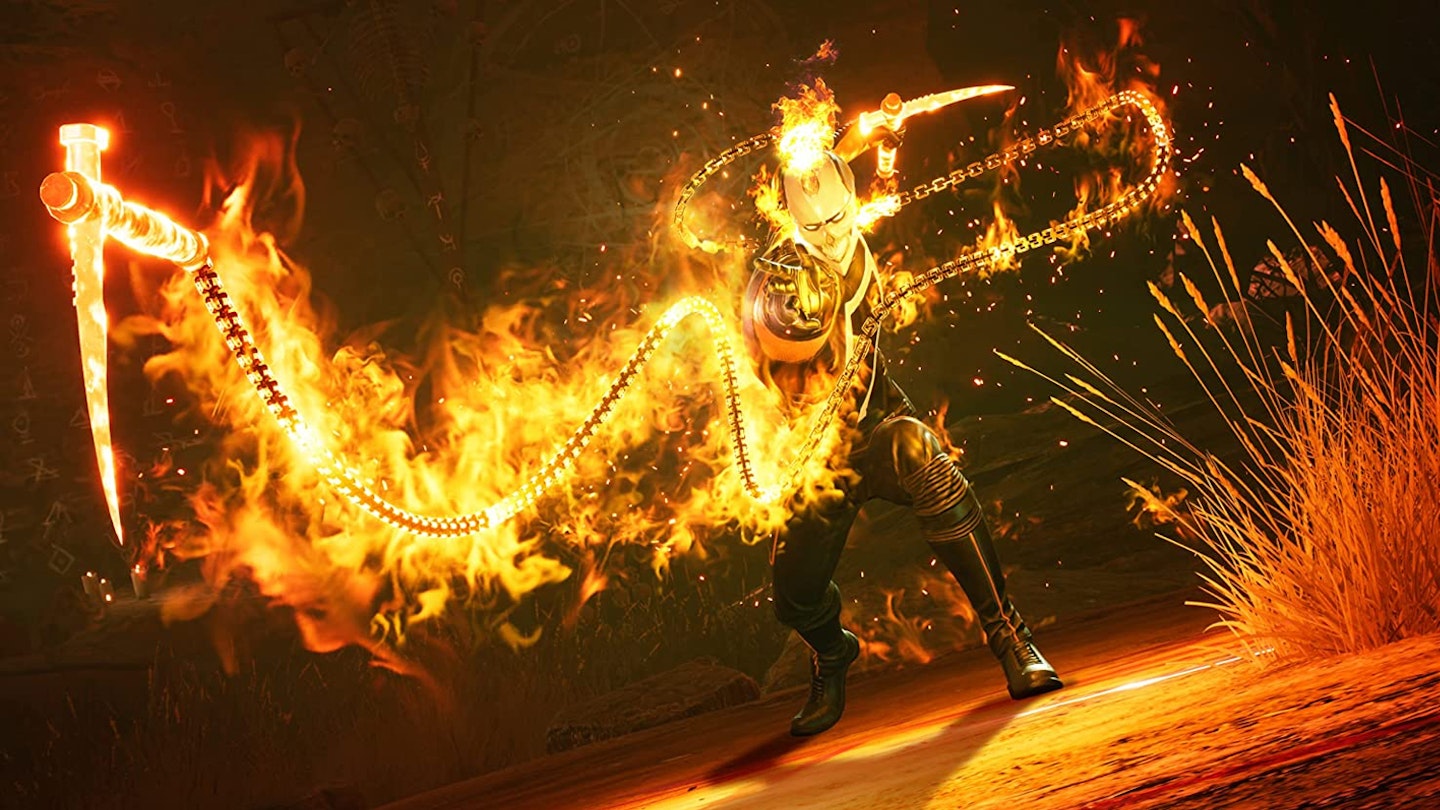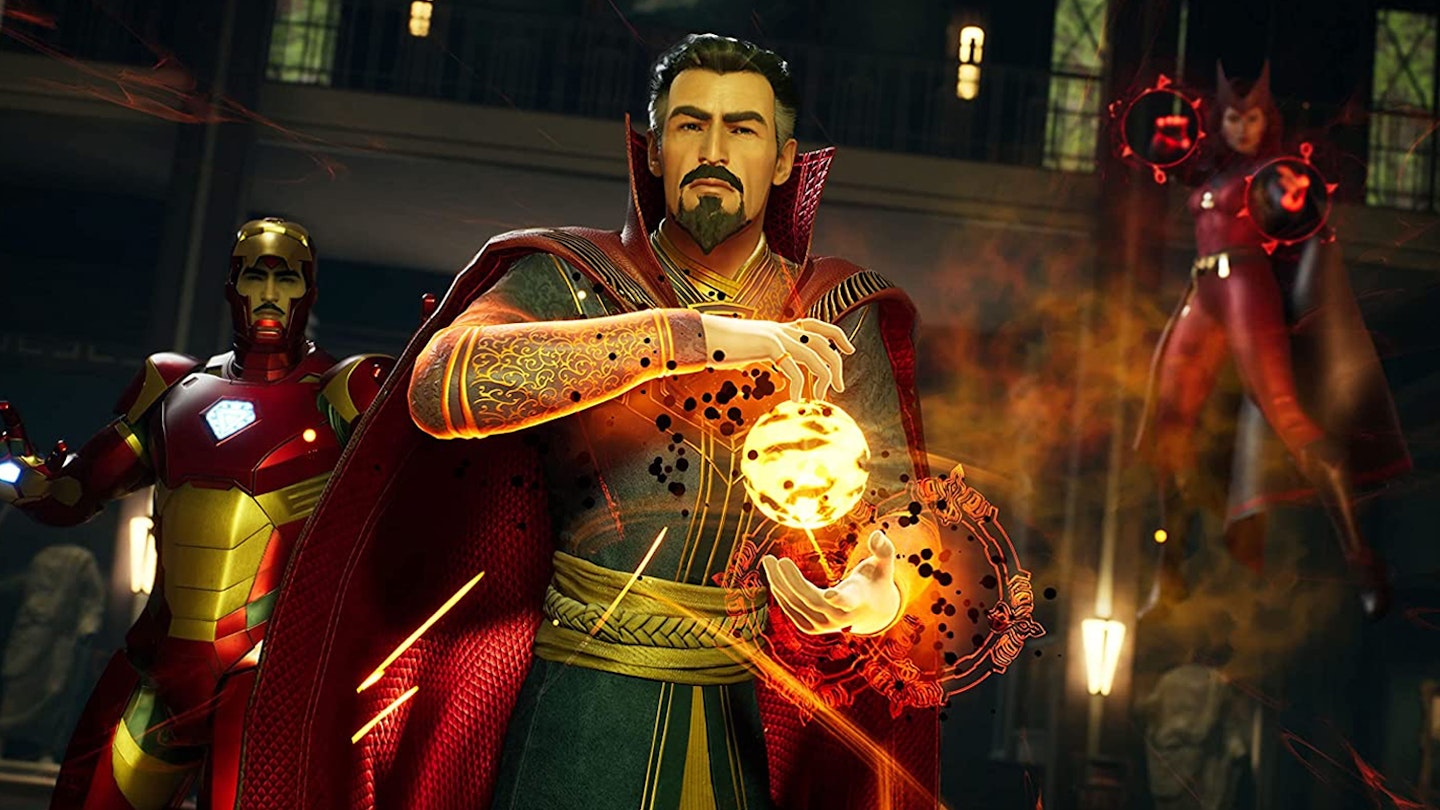Platforms: Xbox, PS5, PC
Marvel's Midnight Suns is the sort of game that is almost impossible to imagine getting made even a few years ago. Marvel's sheer power as a pop-culture powerhouse, thanks to the infinite success of the MCU, is now so vast that it can take a gamble on a game that's not only based on a niche imprint of horror-adjacent comics first published in the 1990s, but one that drops a largely unheard-of cast into a turn-based strategy title. Compared to even as recent a release as 2020's bland, boring Avengers game – all big names and action-heavy gameplay – we've come a long way.

While the Avengers themselves remain front and centre on the cover art here – and even take the spotlight in the opening stages of the game, establishing the rise of a new supernatural threat that Earth's Mightiest Heroes are ill-equipped to tackle – the real focus is on the eponymous Midnight Suns team. Almost all characters from the spooky fringes of the comic book universe – vampire hunter Blade being the most recognisable, joined by Runaways spellcaster Nico Minoru, teleporting demon queen and X-Men alum Magik, and Robbie Reyes, the fourth flame-skulled Ghost Rider – the crew is rounded out by The Hunter, a new character-cum-audience proxy created for the game.
One of the best tactical RPGs in years.
Despite being a new creation it's to her strength that The Hunter fits perfectly into the Marvel Universe. (While the character is a fully-customisable blank slate, including male options, she's pretty clearly canonically female.) Here, she's the daughter of Lilith – a fallen-witch-turned-mother-of-demons released by evil organisation Hydra to aid in conquering the world – with The Hunter the key to stopping her once more. If that tragic family background isn't enough to fit right in alongside the majority of Marvel's heroes, The Hunter's entry into the pantheon is cemented with a host of flashy superpowers that expand as she grows into her destined role.
With a developer like Firaxis at the helm, it's easy to expect Marvel's Midnight Suns would essentially be little more than a superhero-skinned redux of XCOM. At a glance, that would even seem to be the case, with this offering a mix of Marvel's mightiest beating down enemies in turn-based strategic fashion, while researching upgrades and facilities between missions. Look closer though, and there's a whole lot more going on here.

For one, this is more of a deckbuilding game, with heroes' skill and abilities represented as cards. Attack cards are typically free to play, and earn heroism points – which in turn can be spent to use more powerful Heroic ability cards that make use of each character's unique power set. While you'll typically have a set number of card plays per turn, leftover heroism can also be spent to use environmental hazards and traps in each stage. Movement works differently to XCOM too, with there being no real distance limits to where a hero can attack an enemy from, but the direction they're left facing after an attack restricts which environmental tools they can use, and the angles from which they'll hit enemies. Combined with the option to freely move only one character per turn – whether to better position attacks or to avoid telegraphed enemy blows – and movement in Midnight Suns becomes one of the more strategic factors to consider.
Each hero plays and feels very distinctively, too. For instance, Blade excels in street-level attacks and inflicting status effects on enemies, whereas Iron Man is all spectacle and aerial superiority. While Hunter is a mandatory character on story missions, mixing up the rest of the squad with a blend of Avengers and Midnight Suns members can drastically change the outcome of each encounter. The deeper you get into Midnight Suns' systems, the more intricate you realise it all is. It's a treat for fans of the genre, but ultimately provides a very different experience to XCOM.
Unlike Firaxis' sci-fi masterpieces though, this is a game where characters and story matter as much – arguably more – than the battlefield tactics, and which offers strong RPG elements that affect story progression, relationships, and powers. In XCOM, a lot of the storytelling was emergent, with players projecting personalities and importance on blank slate soldiers as they fought off alien menaces. Here, the bond The Hunter forms with team members – Avenger and Midnight Sun alike – not only provides plenty of brilliant character moments, diving deep into comic book lore to expand the story and explore the humanity of its cast, but it's pivotal to progression.

Boosting friendship with characters between missions by taking part in social hangouts or engaging in training can unlock combat bonuses and new abilities, improve relationships on the battlefield, or provide new avenues of research to bolster the team. While the best character moments seem to favour the Midnight Suns members – especially Magik, whose background mirrors Hunter's in poignant ways – every hero gets strong moments if you put in the time. Oddly, the closest comparison for Marvel's Midnight Suns might be Nintendo's Fire Emblem series, which similarly emphasises character bonds. Dialogue decisions Hunter makes along the way also influence her alignment to light or darkness, in turn influencing which abilities she'll learn over the course of the game.
Midnight Suns' biggest standout feature though may be The Abbey, the team's base of operations. A vast church packed with supernatural paraphernalia – and a few key high-tech Avengers facilities – is impressive enough, but it sits amidst surprisingly expansive grounds, packed with mysteries and hidden objectives. Exploring this semi-open world between missions is a huge part of the game – it's eminently possible to lose hours uncovering its secrets and forget entirely about the whole "Lilith and Hydra taking over the world" thing. It's a truly great addition to the wider Marvel canon, and immediately cements itself as an iconic location, up there with the X-Mansion or Baxter Building.
The only point to the game's detriment is that its deckbuilding system is too fiddly in places. Tutorials don't do a great job of explaining how to kit out each character's set of cards, and the upgrade system – whereby duplicate cards can be crafted and then combined to make more powerful versions – never seems entirely clear on when you can actually combine them. Similarly, the number of items that need to be opened or researched by other characters – mainly Doctor Strange or Iron Man – and the time taken to develop new technologies may mean there are often too many plates to keep spinning, especially for players drawn in by the roster who've never played a tactics game before.
But despite this minor flaw, Midnight Suns otherwise proves itself a dark delight. What could have been a lazy brand crossover is instead one of the best tactical RPGs in years. And, while fans of that genre will love this, it's especially a gift to comic fans, who will relish every nuanced character moment or hidden reference drawn from the source material.
